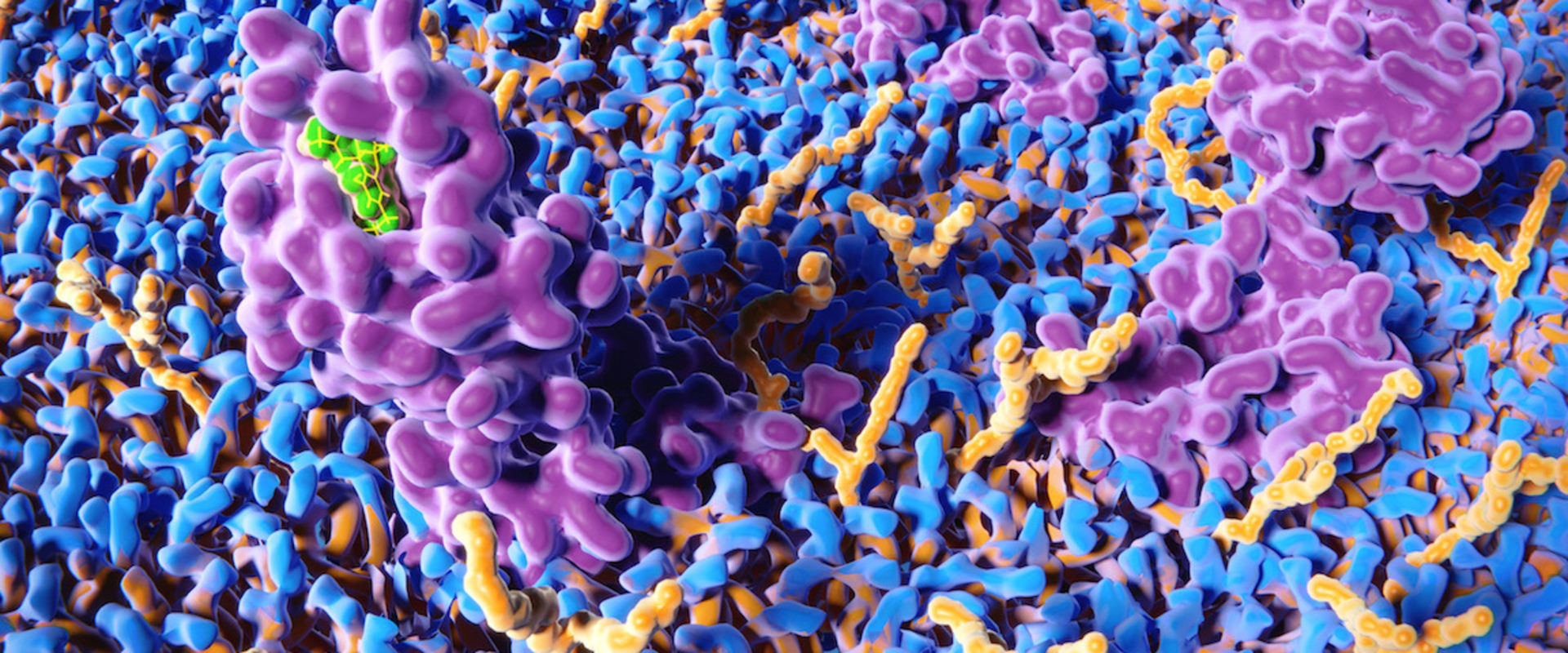The endocannabinoid system is an important part of the body's overall homeostasis. Cannabinoid Receptor 1 (CB1) is one of the key elements of this system, acting as a vital regulator of many physiological processes. In this article, we will explore CB1 and its role in the endocannabinoid system. CB1 is a G-protein coupled receptor located in the central and peripheral nervous systems, as well as various other tissues in the body. Its primary role is to regulate and modulate the endocannabinoid system, helping to keep the body in balance.
By interacting with endocannabinoids such as anandamide and 2-arachidonoylglycerol, CB1 plays a major role in regulating pain, mood, appetite, memory, and inflammation. In this article, we will delve into the details of CB1 and its various functions. We will explore how it interacts with the endocannabinoid system and how it can be used to help maintain health and wellbeing. Cannabinoid Receptor 1 (CB1) is a G-protein coupled receptor that plays an important role in the endocannabinoid system. It is responsible for mediating many of the effects of cannabinoids, such as tetrahydrocannabinol (THC), on the body. In this article, we will explore CB1’s structure and function, how it interacts with other receptors, and its role in the endocannabinoid system. What is Cannabinoid Receptor 1?Cannabinoid Receptor 1 (CB1) is a G-protein coupled receptor that is found throughout the body.
It is primarily involved in the regulation of mood, appetite, memory, sleep, and pain. CB1 is most commonly found in the brain and central nervous system, but is also present in the liver, kidneys, lungs, heart, and other organs. When activated by cannabinoids like THC, CB1 triggers various physiological responses, including increased appetite and pain relief. Structure and Function of CB1The structure of CB1 consists of seven transmembrane domains that are connected to a G-protein that activates specific signaling pathways. The most common type of CB1 receptor is the Gi/o-coupled receptor which activates the adenylyl cyclase enzyme when it binds to THC or other cannabinoids.
Adenylyl cyclase converts ATP into cyclic adenosine monophosphate (cAMP), which triggers various physiological responses in the body. CB1 also binds to other molecules such as endocannabinoids, non-cannabinoid receptor agonists and antagonists, and non-cannabinoid ligands. Endocannabinoids are substances produced within the body that act on cannabinoid receptors. Non-cannabinoid receptor agonists and antagonists are molecules that either activate or inhibit cannabinoid receptors. Finally, non-cannabinoid ligands are molecules that bind to cannabinoid receptors but do not activate them. Interaction with Other ReceptorsCB1 receptors have been found to interact with other types of receptors in the body, such as serotonin receptors and opioid receptors.
When CB1 interacts with these receptors it can either activate or inhibit their activity. For example, when CB1 binds to serotonin receptors it can inhibit their activity and reduce anxiety levels. On the other hand, when CB1 binds to opioid receptors it can activate their activity and increase pain relief. Role of CB1 in the Endocannabinoid SystemThe endocannabinoid system is responsible for regulating many of the body’s physiological processes such as appetite, mood, memory, and pain. It consists of two main types of cannabinoid receptors: CB1 and CB2. CB1 is primarily found in the brain and central nervous system while CB2 is primarily found in the immune system.
Both types of receptors are activated by endocannabinoids like anandamide and 2-AG as well as exogenous cannabinoids like THC. CB1 plays a key role in the endocannabinoid system by mediating many of the effects of cannabinoids on the body. It has been shown to be involved in regulating appetite, mood, memory, pain perception, motor coordination, learning, reward processing, and more. It has also been linked to various neurological disorders such as Alzheimer’s disease, Parkinson’s disease, Huntington’s disease, multiple sclerosis, and schizophrenia. Potential Therapeutic Uses of CB1Due to its role in mediating many of the effects of cannabinoids on the body, CB1 has potential therapeutic uses for various conditions. For example, it has been studied for its potential to reduce inflammation and pain as well as its ability to regulate appetite in people with eating disorders.
Additionally, it has been studied for its potential to treat neurological disorders such as Alzheimer’s disease, Parkinson’s disease, Huntington’s disease, multiple sclerosis, and schizophrenia. CB1 has also been studied for its potential to treat addiction and substance use disorders. In animal studies it has been shown to reduce alcohol consumption as well as nicotine consumption. Additionally, it has been studied for its potential to treat opioid use disorder as well as other forms of addiction. ConclusionIn conclusion, Cannabinoid Receptor 1 (CB1) plays an important role in the endocannabinoid system. It is responsible for mediating many of the effects of cannabinoids on the body and has potential therapeutic uses for various conditions.
Further research is needed to fully understand how CB1 works and its potential therapeutic applications.
Interaction with Other Receptors
Cannabinoid Receptor 1 (CB1) interacts with other receptors in the body, such as serotonin and dopamine receptors. Serotonin receptors are involved in the regulation of mood and emotion, while dopamine receptors are involved in reward-seeking behavior. When CB1 is activated, it can interact with these receptors to modulate their activity. For example, when CB1 binds to serotonin receptors, it can enhance the activity of serotonin, leading to increased feelings of well-being and decreased anxiety. Similarly, when CB1 binds to dopamine receptors, it can increase the activity of dopamine, leading to an increase in reward-seeking behavior. These interactions between CB1 and other receptors help explain the wide range of effects that cannabinoids have on the body.By understanding how CB1 interacts with other receptors, we can gain a better understanding of the endocannabinoid system and how it works to regulate the body.
What is Cannabinoid Receptor 1?
Cannabinoid Receptor 1 (CB1) is a G-protein coupled receptor that is found in the endocannabinoid system. It is responsible for mediating the effects of cannabinoids, such as tetrahydrocannabinol (THC), on the body. CB1 plays a role in the regulation of many bodily processes, including pain sensation, mood, memory, and appetite.It works by binding to cannabinoid molecules, which then activate or inhibit certain pathways in the body. Additionally, it has been found to interact with other types of receptors, such as opioid and serotonin receptors. CB1 is mainly located in the central and peripheral nervous systems, but it is also present in the reproductive organs, liver, and kidneys. Its presence in these organs suggests that it may play a role in regulating hormone production and metabolism. In addition to its role in the endocannabinoid system, CB1 has also been linked to other conditions and diseases.
For example, it has been implicated in obesity, addiction, depression, anxiety, and Alzheimer's disease.
Potential Therapeutic Uses of CB1
Cannabinoid Receptor 1 (CB1) has been studied for its potential therapeutic uses in a range of conditions, including pain relief and anti-anxiety effects. Pain relief is achieved through CB1's action on the endocannabinoid system, which modulates the release of neurotransmitters and reduces inflammation. CB1 is also thought to have anti-anxiety effects, as it has been shown to reduce the activity of the central nervous system and induce a state of relaxation. Other potential therapeutic uses of CB1 include the treatment of obesity, nausea and vomiting, neurological disorders such as Alzheimer's, and some forms of cancer. In addition to its potential therapeutic uses, CB1 is also being studied for its ability to help reduce drug dependence.Studies have shown that CB1 agonists can reduce the desire for drugs such as cocaine and nicotine. This is likely due to the fact that CB1 is known to modulate dopamine release in the brain, which is involved in reward-seeking behavior. Overall, Cannabinoid Receptor 1 (CB1) has many potential therapeutic uses and is being studied for its role in a variety of conditions. It is important to note that further research is needed in order to better understand the potential therapeutic applications of CB1.
Structure and Function of CB1
Cannabinoid Receptor 1 (CB1) is a G-protein coupled receptor that plays an important role in the endocannabinoid system. Structurally, it is composed of seven transmembrane domains, which are connected by three intracellular and three extracellular loops.CB1 binds to the endogenous cannabinoid molecules anandamide and 2-arachidonoylglycerol (2-AG), as well as to the exogenous cannabinoids such as tetrahydrocannabinol (THC).The receptor acts as a signal transducer, transmitting information from outside the cell to the cell's interior. When it binds to cannabinoids, it triggers a cascade of biochemical events that lead to changes in cell function. For example, when CB1 binds to THC, it activates the G-protein signaling pathway, which in turn leads to the release of various neurotransmitters, such as dopamine. This can lead to changes in behavior, such as feeling relaxed or having a “high”.CB1 is also involved in other physiological processes, such as pain perception, appetite regulation, and motor control.
The receptor has been shown to interact with other receptors, such as the serotonin 5-HT2A receptor and the opioid mu-opioid receptor. This suggests that cannabinoids may modulate the activity of these receptors, leading to changes in behavior or physiology. In conclusion, CB1 is an important part of the endocannabinoid system that is responsible for mediating many of the effects of cannabinoids. Its structure and function are complex and it interacts with other receptors to modulate their activities. By understanding how CB1 works, we can gain insight into how cannabinoids interact with the body and how they can be used therapeutically.
Role of CB1 in the Endocannabinoid System
Cannabinoid Receptor 1 (CB1) plays a key role in the endocannabinoid system, which is responsible for helping to regulate a variety of physiological processes.CB1 is a G-protein coupled receptor that interacts with other receptors in the body and mediates the effects of cannabinoids, such as tetrahydrocannabinol (THC). CB1 has been found to be involved in processes such as appetite control, pain sensation, memory formation, and anxiety regulation. In the endocannabinoid system, CB1 is responsible for mediating the effects of cannabinoids by binding to anandamide and 2-arachidonoylglycerol (2-AG) endocannabinoids. It works by binding to the endocannabinoids, which activate G-proteins and in turn activate enzymes that lead to changes in cell activity. This process is crucial for helping to regulate physiological processes such as appetite control, pain sensation, memory formation, and anxiety regulation. The endocannabinoid system is important for helping to maintain homeostasis in the body by regulating a variety of physiological processes.
By understanding how CB1 works within the endocannabinoid system, researchers are able to gain insight into how this system works and how it can be manipulated to treat certain medical conditions. Cannabinoid Receptor 1 (CB1) is an important G-protein coupled receptor that plays a key role in the endocannabinoid system. It is responsible for mediating the effects of cannabinoids, such as THC, on the body. By understanding its structure and function, how it interacts with other receptors, and its role in the endocannabinoid system, we can get a better understanding of the endocannabinoid system as a whole.
Additionally, understanding CB1 may lead to potential therapeutic uses, such as treating pain, inflammation, and other conditions.




Leave Reply